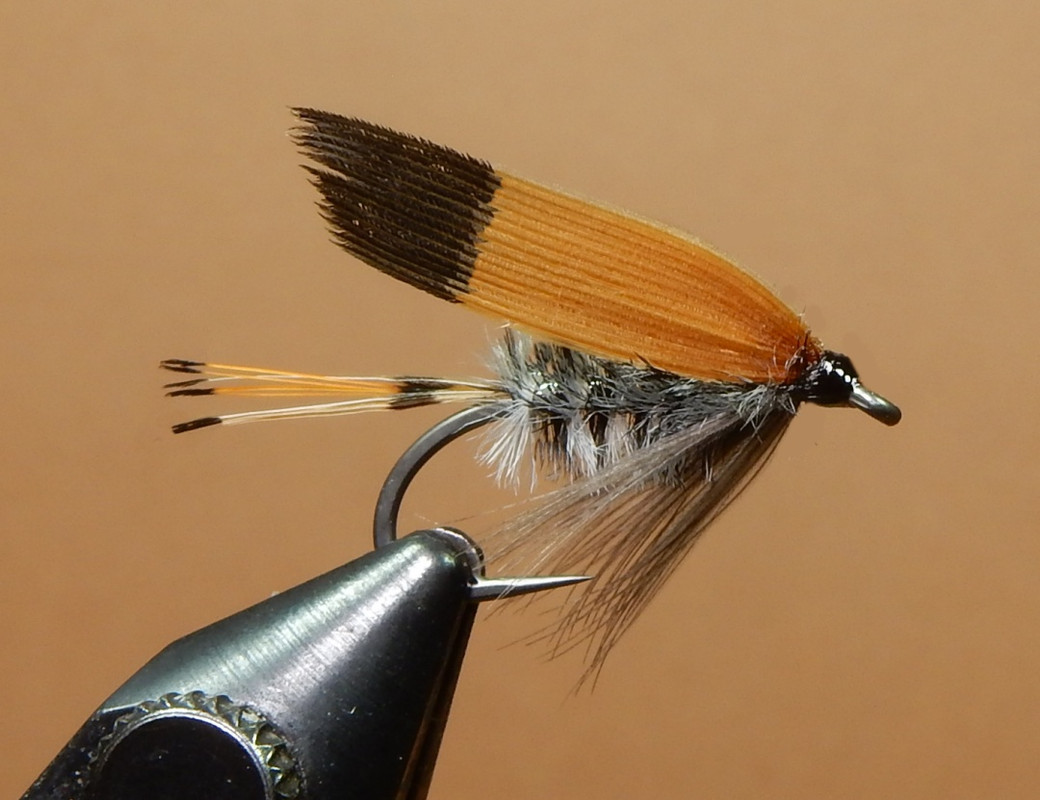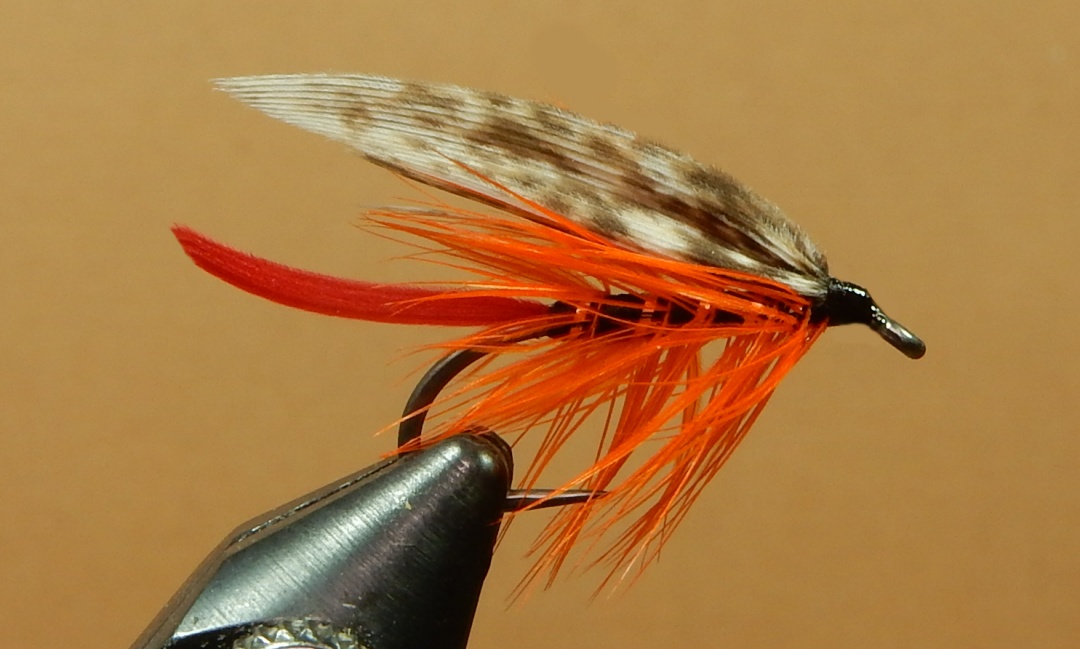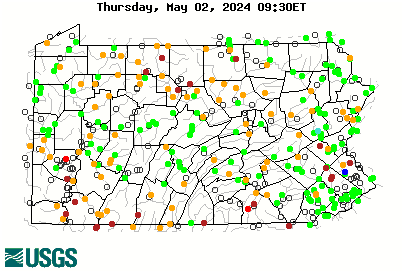nfrechet
Well-known member
- Joined
- Mar 14, 2013
- Messages
- 2,222

Lady Mills
Tail - Golden pheasant tippet
Ribbing - Silver tinsel and black ostrich herl
Body - White ostrich herl
Hackle - Blue gray
Wing - Cinnamon with black tip
Don Bastian Notes
The ribbing on the Lady Mills is unusual. Like a palmered hackle with a tinsel rib, the tinsel should be wound first and the ostrich herl is wound butted against the rear edge of the tinsel
This wing, was all cinnamon. I made it black, like the one in the book painting, by using a black magic marker, but dabbing the feather to make it look right. A little tying secret.
Trout - Ray Bergman







